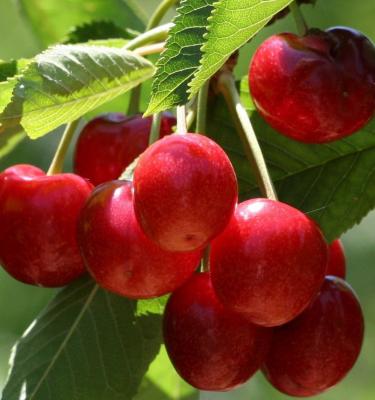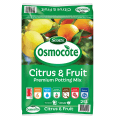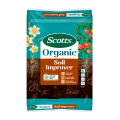

How to Grow Cherry Trees
Homegrown cherries are sweet, juicy and delicious. Many varieties will be dripping with ready to pick cherries around Christmas time, so you can enjoy your handpicked harvest with family and friends over the festive season.
5 top tips for growing cherries
- Choose a full sun position in your garden or grow a dwarf cherry tree in a large pot.
- Look for a self-pollinating cherry tree unless you have the space for 2 or more cherry trees.
- Netting cherry trees is essential to protect your crop from birds.
- Cherries will be ready to harvest around Christmas and some varieties into January and February.
- If you live in an area where the Winter minimum temperatures get to 10 degrees C or less it’s worth growing cherries.
Prepare
Cherry trees are long lived and tall growing, but they can be pruned to a manageable height of 5-6 metres or you can find dwarf varieties that will grow to 2.5 metres. Cherries prefer a cooler climate with low humidity, but they will grow in warm and more arid areas too - just look for a variety that’s best suited to your area.
These deciduous trees lose their leaves in Winter time and their bare branches will be covered in cherry blossom come Spring. Once the blossom falls, leaves emerge and then cherries form in mid-Summer.
Some varieties of cherry will need a second tree for pollination, but if you don’t have the space for 2 trees look for a self-fertile (or self-pollinating) variety - there are many to choose from!
Cherry trees prefer a full sun spot in a well drained soil and they do require regular watering when fruiting. Prepare the soil for planting by digging a hole that’s twice as wide as the root ball of your tree and the same depth. Loosen the soil at the bottom of the hole and mix Scotts Osmocote Compost Premium Soil Improver and Scotts Performance Natural All Purpose Organic Based Fertiliser through the original soil.
Planting cherry trees
Planting cherry trees in the garden
Growing from bare-rooted or potted trees
Bare-rooted cherry trees can be purchased and planted in winter when the tree will be dormant. Potted cherries can be planted at any time, except in the heat of Summer.
Plant your cherry tree at the same depth it was in the pot or if bare-rooted make sure any graft on the truck is well above the soil surface. Add a stake to support bare-rooted trees at planting - this can be removed once the roots have taken.
Firm down the soil around the roots of your newly planted cherry tree and water in well. Top dress around the tree with an organic sugar cane mulch (but avoid touching the trunk) to suppress weeds and retain moisture.
Growing cherry trees in pots
You can grow cherry trees in large pots or containers so long as they have good drainage. An old half-wine barrel with drainage holes added is an ideal size. Fill your pot with a premium potting mix like Scotts Osmocote Citrus & Fruit Potting Mix before planting your bare-rooted or potted cherry tree.
Firm down the soil around your newly planted cherry tree in the pot and water it in well to settle its roots in nicely.
Mulch the top of the soil in the pot to retain moisture and ensure the pot can be easily watered during the summer months.
Harvesting cherry trees
Cherries are ready to harvest in December, January or late February - depending on the variety.
Pick cherries with their stalks still attached if you can, this helps them last a little longer once picked (if you don’t eat them all at once).
You’ll need to securely net your trees to protect the crop from hungry birds and other animals. Once the cherries are formed use a wildlife safe, 4mm hole or smaller white netting that’s pulled tightly over the tree and secured around the truck or set up a frame structure over the tree so you can easily place the net over this.

Common cherry tree pests & diseases
- Cherries can be prone to splitting as the fruit is ripening - avoid overhead watering and protect from rain if fruit is nearly ready to pick if possible.
- Pear and Cherry Slug (the larvae of the Black Saw Fly) are the most common pest of cherry trees. They can quickly defoliate a cherry tree, weaken it and reducing your crop. Control these pests by sprinkling wood ash (from a fireplace or bonfire) around the base of the tree and dusted all over the leaves.
- Established trees should be pruned in winter when dormant to an open vase shape and fertilised in spring and again in autumn with Scotts Osmocote® Plus Organics Citrus & Fruit Plant Food & Soil Improver.



